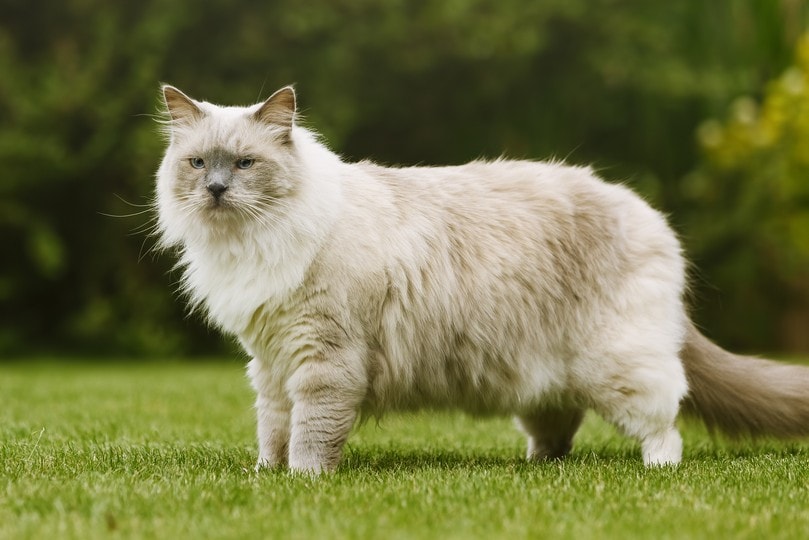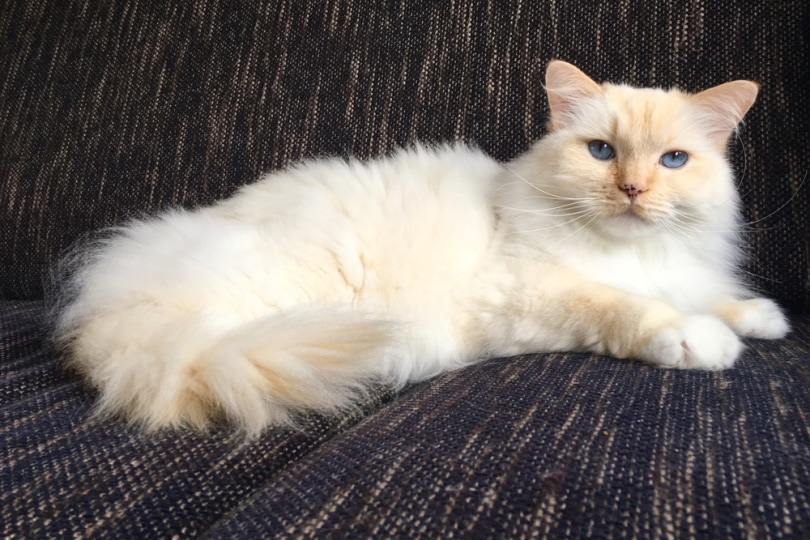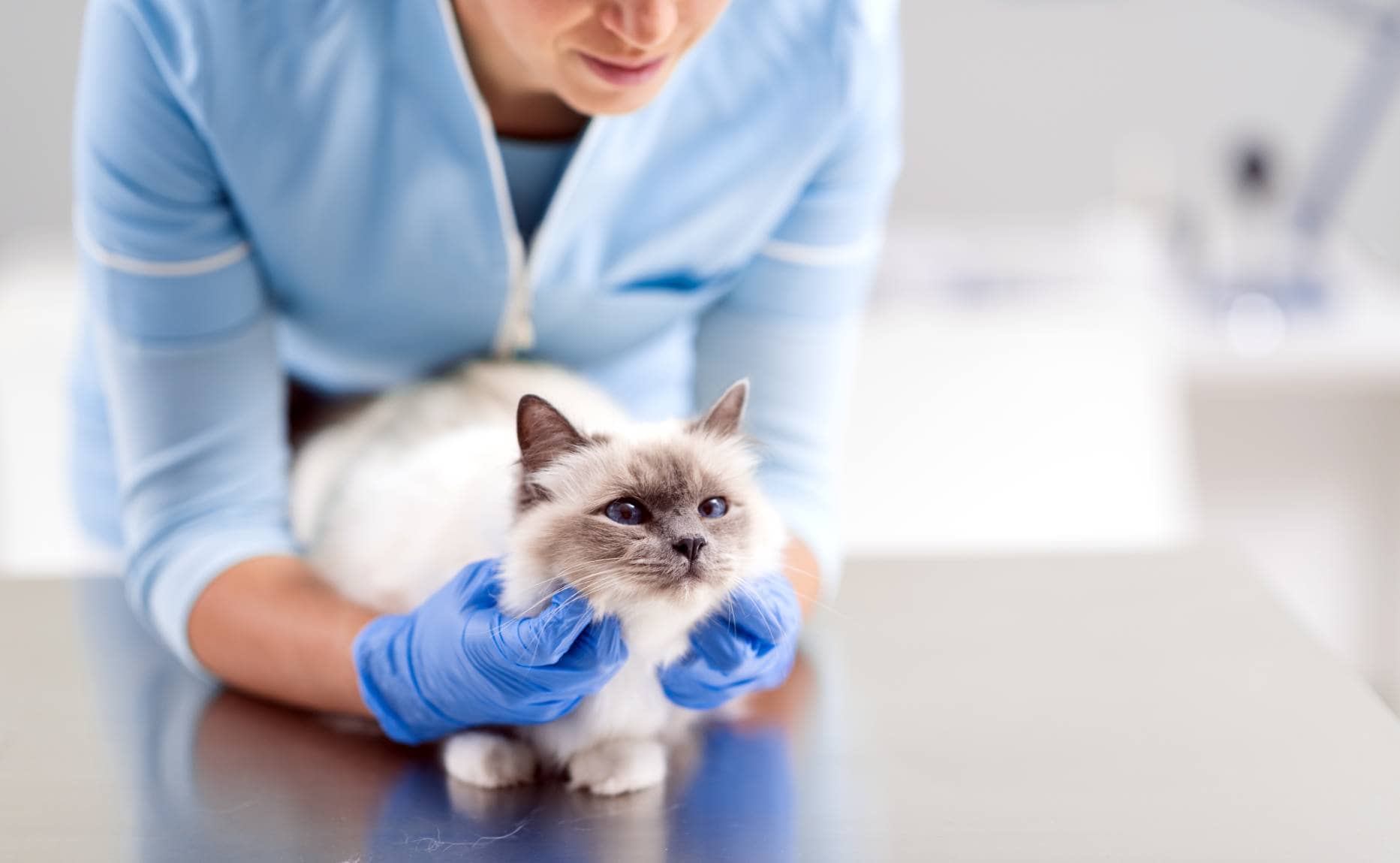
The Ragdoll cat is a lot like a living stuffed animal, with their magnificent blue eyes, angelic face, silky fur, and rounded body. But what melts the hearts of lovers of this breed is the Ragdoll’s complete abandonment when we take them in our arms: they start to purr with pleasure, their cute little paws dangling, and they don’t show the slightest nervousness. The Ragdoll cat also has a gentle character and boundless affection for their human parents, making them an exceptional feline companion.
However, although they are generally of good constitution, the Ragdoll can be affected by certain diseases and genetic conditions. This is not to say that all Ragdolls will develop these health issues, but rather that this breed may be more at risk than other cats. If you already have a Ragdoll in your home or are thinking of adopting one, it’s a good idea to learn about the common health problems of this gorgeous and friendly feline.
The 6 Common Ragdoll Cat Health Problems
1. Hypertrophic Cardiomyopathy (HCM)
Hypertrophic cardiomyopathy is a heart disease characterized by thickening of the heart’s walls and increased left ventricular mass. Eventually, the heart muscle becomes too thick to pump blood effectively. It is an inherited condition that can affect all cats, but research has shown that it is, unfortunately, more common in Ragdolls due to a mutation in the MYBPC3 gene. This mutation is also found in the Maine Coon.
Common symptoms include:
During the clinical examination, the veterinarian may also detect a heart murmur. This disease must be detected in time and taken care of quickly so that the treatment is more effective and to ensure that the cat can live without pain.
2. Polycystic Kidney Disease (PKD)
Polycystic kidney disease is caused by a defective gene first identified in Persians. However, this defective gene is also seen in other breeds, such as Ragdolls. Kittens that are affected are born with tiny cysts inside the kidneys. These cysts grow slowly over time, eventually destroying the affected organ.
The most common symptoms are:
Unfortunately, polycystic kidney disease cannot be cured, but a specific diet and medication can slow the progression of the disease. Early diagnosis, mainly through annual urine and blood tests, allows rapid disease management.
In addition, be aware that a genetic test to detect the presence of the defective gene in cats is available. Therefore, a responsible breeder would not allow a cat carrying the PKD gene to be used for breeding.

3. Neonatal Isoerythrolysis (NI)
Neonatal isoerythrolysis is a rare disease caused by an incompatibility between the blood groups of the mother and one or more kittens. It occurs when a newborn kitten with type A blood sucks the first milk (colostrum) from a mother with type B blood (or vice versa: type B kitten and type A mother).
The mother’s colostrum contains her type A blood immunity: when the type B blood kitten absorbs the antigen from her mother’s milk, an immune reaction is set in motion in his little body. His immune system develops antibodies that attack and destroy the kitten’s red blood cells. This causes his death only a few days after his birth.
This disease is often seen in breeds with a higher likelihood of having type B blood, such as Ragdolls.
4. Feline Aortic Thromboembolism (FATE)
Since Ragdolls are more likely to suffer from heart disease like HCM, they are also at risk of developing blood clots in their arteries, also known as feline aortic thromboembolism. As these blood clots often lodge near the aorta, this has the effect of blocking blood flow to the cat’s hind legs. So, if a cat’s hind legs suddenly become paralyzed, it’s a life-threatening emergency.
If your cat is diagnosed with a heart condition like HCM, your vet can prescribe medications to decrease the risk of blood clots.

5. Cryptococcosis
Cryptococcosis is the most common systemic fungal disease in cats worldwide, but Ragdolls, Siamese, and cats with compromised immune systems are more susceptible to it. It is caused by the fungus C. neoformans, which can also infect humans and birds.
This fungus is contracted through the cat’s nasal passages and can spread to other organs.
Symptoms include:
Fortunately, most cats affected by cryptococcosis can be successfully treated with oral antifungal medications.
6. Obesity
Obesity is a major health problem that can shorten your cat’s life and lead to many other health problems, such as arthritis and diabetes. And since the Ragdoll cat would rather snuggle on their human’s lap than climb their cat tree, it’s no wonder this breed is prone to being overweight. Luckily, you can encourage your cat to be more active by playing with him, buying interactive games, limiting treats, and feeding him a balanced diet.

How to Keep Your Ragdoll Cat Healthy
Unfortunately, you can’t prevent your Ragdoll from developing a genetic disease, but you can give it all the care it needs to keep it healthy:
Conclusion
Ragdoll cats are full of qualities, although they are prone to certain health issues. However, by knowing this in advance, you can ensure that your beautiful cat will receive the proper veterinary care while providing him with an excellent quality of life in your home. Plus, Ragdoll cats can live more than 15 years old, which is another reason to adopt one of these adorable felines!
Related Reads:
Featured Image Credit: Atmosphere1, Shutterstock







